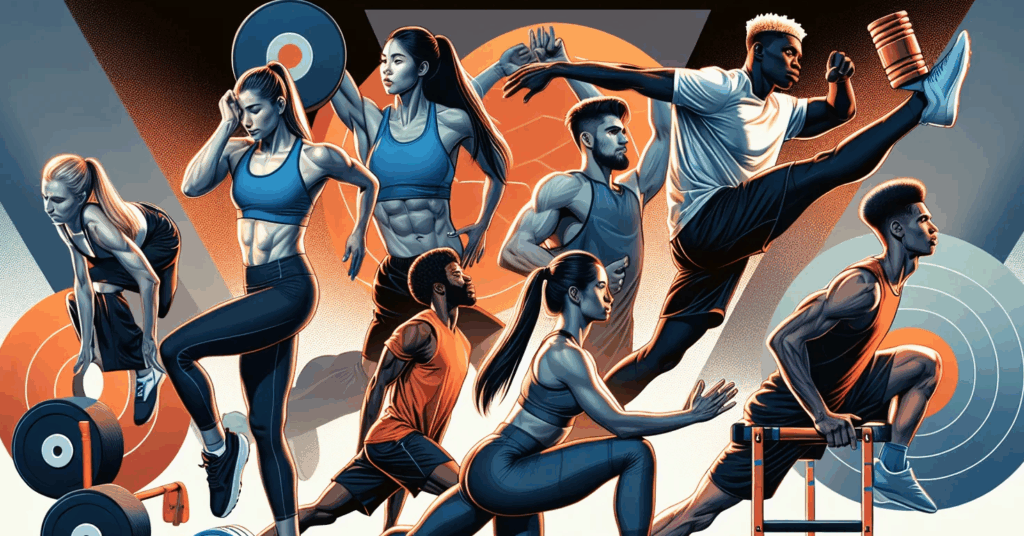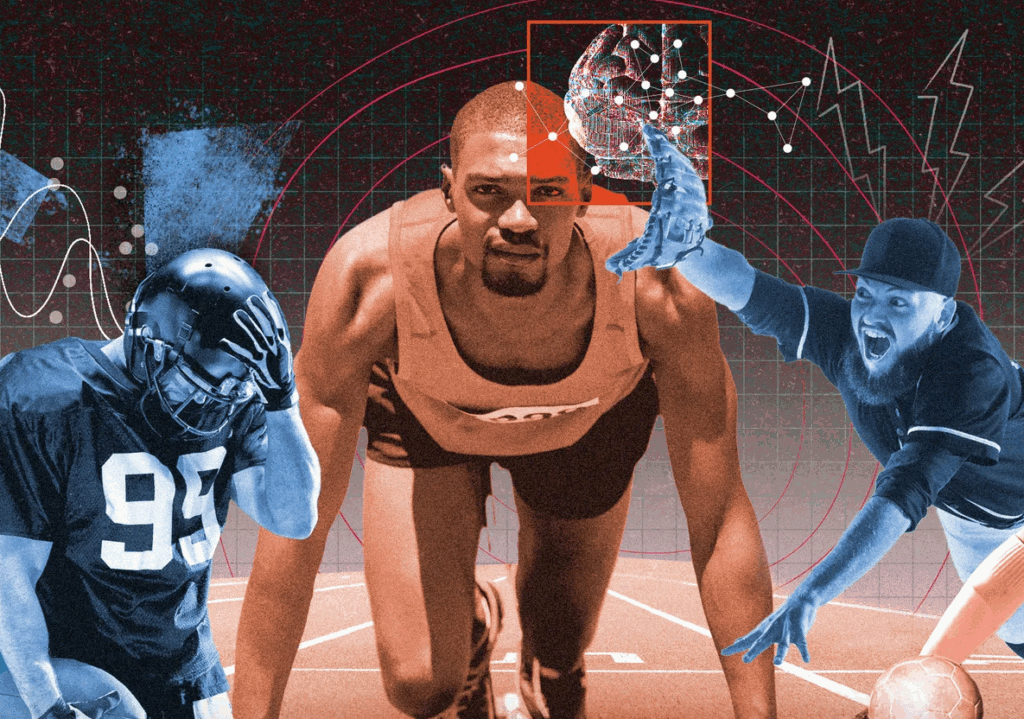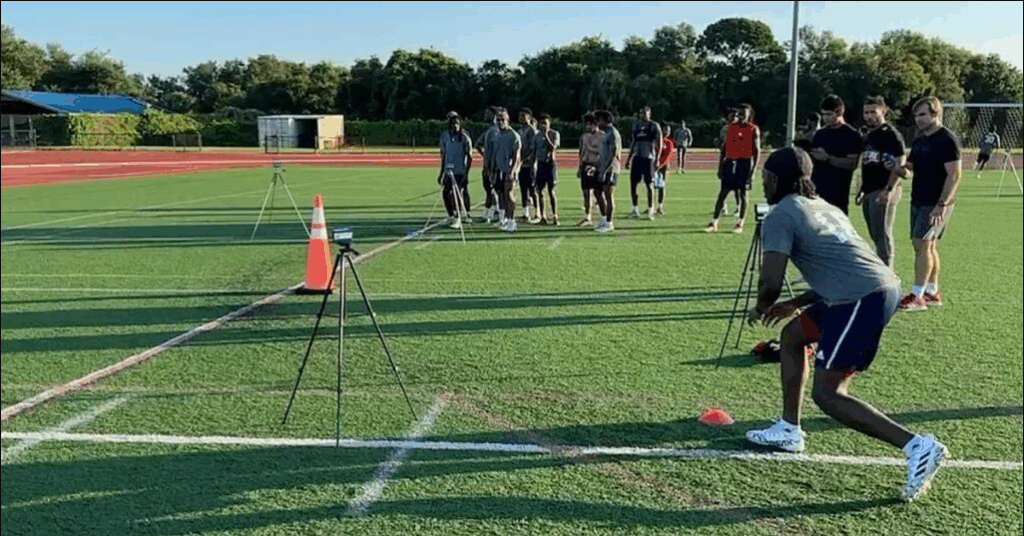You’ll boost mobility and athletic performance through engaging games like Reaction Tag, Animal Flow Relays, and Mirror Movement Challenges that force your body through multiple movement planes while keeping your mind focused on competition. These games enhance neuromuscular control, improve movement efficiency, and strengthen injury prevention mechanisms by challenging balance, coordination, and spontaneous reactions.
Transform boring stretching routines into dynamic 5-10 minute warm-ups that develop real-world athletic skills you’ll actually enjoy practicing.
What Makes a Game Mobility-Focused?
When you’re designing or choosing games to enhance athletic mobility, certain characteristics separate truly effective movement games from simple recreational activities. You’ll want to prioritize movement variability that challenges your body through multiple planes and patterns. The best mobility-focused games naturally incorporate a full range of motion exercises without feeling like traditional stretching.
Body awareness becomes pivotal as you navigate dynamic challenges that require constant positional adjustments. Unlike static drills, movement-based play engages your nervous system differently, promoting functional movement patterns that transfer directly to sport.

How Games Improve Athletic Performance
As you integrate game-based training into your routine, you’re tapping into powerful neurological pathways that traditional drills often miss. Games enhance neuromuscular control by forcing your brain to process opponents’ positions, environmental changes, and movement options simultaneously. This complexity mirrors real sports performance demands.
You’ll develop superior movement efficiency through games because they require spontaneous reactions rather than rehearsed patterns. When you’re chasing, dodging, or competing, your body naturally finds ideal movement solutions, improving coordination and reducing wasted energy.

Top 10 Games That Improve Mobility and Performance
These top ten games combine fun with functional training, challenging your body through reaction-based movements, animal-inspired flows, and balance work. Each game targets different aspects of athleticism while keeping you engaged and motivated to push harder than traditional drills might allow.
Reaction Tag
Beyond traditional sprinting drills, reaction tag transforms basic chase mechanics into a powerful tool for developing athletic agility and spatial awareness. This game revolutionizes typical reaction training by forcing unpredictable directional changes that standard footwork exercises can’t match.
Set up by designating one tagger who must pursue others within boundaries. When tagged, you immediately become the new tagger. No countdown, just instant role reversal. It creates continuous speed and movement patterns that challenge your nervous system.
You’re constantly scanning, reacting, and adjusting your position relative to others. Unlike predictable agility games, reaction tag demands split-second decisions while maintaining maximum velocity. Your body learns to decelerate, pivot, and accelerate in any direction, building the reactive strength essential for sports performance through these dynamic coordination games.
Animal Flow Relays
Bear crawls, crab walks, and lizard crawls form the foundation of animal flow relays that will transform your hip and shoulder mobility. You’ll race teammates through sequences that demand full-body control while opening tight joints. As you shift between movements, your flexibility training becomes dynamic and competitive.
Set up 20-yard lanes for relay teams. Perform each animal movement for one length before tagging your partner. The bear crawl strengthens shoulders while stretching hip flexors. Crab walks challenge mobility training through posterior chain activation. Lizard crawls enhance dynamic coordination between the upper and lower body.
These relays accelerate athletic development by combining cardiovascular work with functional movement patterns. You’re building strength, improving your range of motion, and developing spatial awareness simultaneously.
Mirror Movement Challenge
When you’re facing a partner in the mirror movement challenge, you’ll discover how quickly your coordination and proprioception improve through real-time mimicry. Take turns as leader and follower, copying movements like lunges, twists, and reaches that transform basic mobility drills into engaging competitions.
This game enhances your balance and agility by forcing rapid adjustments to match your partner’s motions. You’re constantly processing visual cues while maintaining body control, which sharpens neuromuscular connections essential for athletic performance.
Agility Cone Chase
Racing through cone patterns takes the coordination skills you’ve developed in mirror movements and amplifies them with speed and unpredictability. Set up 5-10 cones in various patterns, such as zigzags, squares, or random placements. One player chases while the other evades, weaving through the cones. The chaser must match every cut and direction change.
This game forces you to accelerate, decelerate, and pivot on a dime. Your ankles, knees, and hips work overtime to maintain control during sharp directional shifts. You’re training your body to react faster than your conscious mind can process.
Switch roles every 30-45 seconds to prevent fatigue from compromising movement quality. As you improve, tighten cone spacing or add verbal cues for instant direction changes.
Balance Beam Games
Balance beam activities transform a simple raised surface into a dynamic training tool that challenges every stabilizing muscle in your body. You’ll develop superior proprioception while traversing narrow surfaces, forcing your core and lower body to work together in maintaining equilibrium.
Try single-leg stands with arm movements, lateral walks with resistance bands, or backward lunges along the beam. These exercises activate deep stabilizers that traditional strength training often misses. You can progress from wide beams to narrower ones, add external loads, or incorporate ball tosses with a partner. Even closing your eyes during basic walks dramatically increases difficulty.
Balance beam games build ankle stability, knee control, and hip alignment. These components are essential for injury prevention and athletic power transfer.
Medicine Ball Toss & Move
Medicine ball exercises take athletic training beyond static balance work by adding explosive movement patterns that mirror real sports demands. You’ll start with a basic chest pass to a partner while shuffling laterally. As you catch the ball, immediately change direction and toss it back. This game forces your body to absorb force, stabilize, and redirect energy.
Progress by adding rotational throws, overhead slams, and single-leg catches. These variations challenge your core stability while improving hip and shoulder mobility. You’re training your body to move powerfully through multiple planes while maintaining control.
The constant catching and throwing develop hand-eye coordination and reaction time. Your joints learn to handle rapid loading and unloading, building resilience against injury while enhancing athletic power output.
Obstacle Course Variations
When you’re designing obstacle courses for athletic development, you’re creating dynamic environments that challenge every aspect of movement capability. You’ll incorporate hurdles, cones, ropes, and platforms that force multi-directional movement patterns. Each obstacle demands different mobility requirements, such as crawling under barriers, opening hip flexors, jumping over hurdles, activating explosive power, and weaving through poles to enhance lateral flexibility.
You can adjust difficulty by changing obstacle heights, distances, and sequences. Add cognitive challenges like memorizing patterns or following color-coded routes to sharpen mental focus alongside physical skills. Time trials create competitive intensity, while partner races build teamwork.
Partner Resistance Games
While obstacle courses test individual movement capabilities, partner resistance games tap into reactive athleticism through dynamic opposition. You’ll develop explosive power and control when working against another person’s unpredictable force.
Try “Push-Pull Balance,” where you and your partner hold opposite ends of a resistance band while maintaining single-leg stances. As one pushes, the other resists, creating constant micro-adjustments that strengthen stabilizers. “Mirrored Squat Battles” involve facing your partner with palms pressed together and performing synchronized squats while applying varying pressure.
These games enhance proprioception because you can’t predict your partner’s movements. You must react instantly, improving neuromuscular coordination. The competitive element naturally increases effort output, pushing you beyond comfortable movement patterns. This unpredictability better mimics real sports scenarios than static resistance training.
Ladder Pattern Races
Partner resistance games build reactive strength, but ladder pattern races sharpen your footwork precision and rhythm. You’ll challenge your neuromuscular coordination while improving hip, knee, and ankle mobility through rapid, multi-directional movements.
Set up an agility ladder and create competitive patterns: forward hops, lateral shuffles, in-and-out steps, or carioca runs. Race against teammates or beat your time. You’re not just moving fast. You’re teaching your joints to articulate through various angles while maintaining speed.
Plyo-Circuit Tag
You’ve mastered controlled ladder movements, but the also-circuit tag activates your explosive potential while expanding the joint range of motion. This high-intensity game combines plyometric stations with tag elements, forcing you to shift between power movements and evasive sprints.
Set up stations for box jumps, broad jumps, lateral bounds, and split lunges. You’re “it” for 30 seconds while others complete plyo exercises. Tag someone mid-jump to transfer roles. The constant threat of being tagged pushes you to maintain explosiveness despite fatigue.
Your joints adapt to rapid loading and unloading patterns, improving elasticity and shock absorption. Start with 3-minute rounds, emphasizing landing mechanics over speed. You’ll build resilient joints while developing game-changing power.
How to Implement These Games in Training
Now that you’ve discovered these dynamic mobility games, how do you actually integrate them into your training routine? Start by incorporating one or two games during your warm-up phase, spending 5-10 minutes on movement-based play. You’ll activate muscles while improving your range of motion more effectively than static stretching alone.
Progress gradually by increasing game complexity, speed, or duration as your body adapts. For beginners, modify the rules to reduce intensity. Walk instead of run during tag games or decrease obstacle heights. Advanced athletes can add resistance bands or weighted vests for extra challenges.
Schedule mobility games 3-4 times weekly, alternating between different activities to prevent boredom. Always include a proper cool-down afterward with light stretching and breathing exercises to maximize recovery and mobility gains.

Precautions and Modifications
Before diving into any mobility game, it is crucial to assess your current fitness level and injury history to prevent setbacks. If you’ve had knee injuries, modify jumping exercises in the plyo-circuit tag by reducing height and impact. For lower back issues, avoid deep animal flow positions and opt for partial ranges of motion.
You’ll need to adjust games based on age and skill level. Younger athletes can handle higher intensities, while older participants benefit from longer warm-ups and gentler progressions.
Beginners should start with basic movement patterns before attempting complex variations.
Always monitor fatigue levels during games. When form breaks down, you’re more prone to injury. Scale intensity by reducing speed, decreasing duration, or simplifying movement patterns. Remember, mobility games should challenge you without causing pain or excessive strain.
Frequently Asked Questions
What’s the Difference Between Mobility Drills and Mobility Games?
You’ll find mobility drills follow structured, repetitive patterns focusing on specific joints, while mobility games incorporate unpredictable movements, competition, and fun elements. Games engage you mentally and physically, making the same mobility work feel less tedious.
Can Games Really Improve Athletic Performance as Much as Structured Drills?
You’ll find games can match or exceed structured drills’ effectiveness by combining skill development with cognitive challenges. They’re especially powerful for improving reaction time, decision-making, and sport-specific movements while keeping you engaged and motivated throughout training.
How Often Should Mobility Games Be Included in a Training Routine?
You’ll want to incorporate mobility games 2-3 times weekly, either as warm-ups before main training or on active recovery days. Start with 10-15 minute sessions and adjust based on your body’s response and training goals.
Are These Games Suitable for All Age Groups?
Yes, you’ll find these games adaptable for everyone. You can modify intensity, complexity, and duration based on age. Kids love the playful nature, adults appreciate the challenge, and seniors benefit from gentler versions that maintain mobility.
Can Mobility Games Help With Injury Prevention?
Yes, they’ll markedly reduce your injury risk by improving joint flexibility, muscle coordination, and body awareness. You’re strengthening stabilizer muscles and teaching your body to move efficiently through various ranges of motion during dynamic play.





